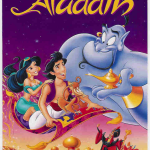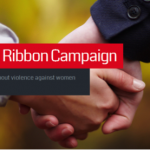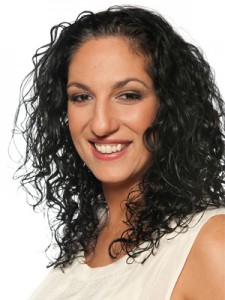Last Saturday, the city where I live in Western Canada held its annual Pride Parade.

This year and against all odds, the first member of my mosque participated in the parade. Sister Sarah (a pseudonym) decided to participate in the parade after years of struggling with reconciling her faith with her sexuality. She decided “to try to blend in” with the rest of the men and women dressed in colourful outfits by wearing a bright yellow hijab tied at the back instead of the front because, despite her courageous choice to join the Pride Day celebrations, she was not ready to face other Muslims in our community.
My province is often identified as the most conservative in Canada. In the past few months there have been reports of racist and homophobic attitudes towards different groups, and the Institute for Sexual Minority Studies and Services research shows that homophobia is still a pervasive attitude among Albertan youth, who often show this through speech. For all of these reasons, I was really proud to see Sister Sarah making the active decision to embrace her sexuality and her religion, although of course this did not come easily.
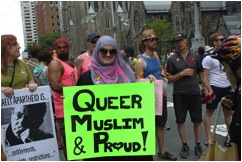
Our Muslim community is not particularly LGTBQ-friendly, and in the past few months a member of our community was recorded telling students in an Islamic school that being gay was an illness just as having cancer or diabetes. Although the school quickly made efforts to disassociate itself from the imam who at the time led my mosque, the truth is that this is the attitude that is pervasive in daily interactions in many mosques in my area.
In addition, discussions about homosexuality often seem to focus on men as the lesbian experience is often dismissed, marginalized or forgotten in some contexts, as I explored before in the case of Indonesia. The result is that Muslim lesbian women in my community find themselves with little access to other community members and support from mosques, schools and other Muslim institutions.
Yet, some events have inspired a few members of my Muslim community to question our mosques’ positions on the “gay issue.” Although it caused uproar in the last women’s lecture I attended, and despite the fact that the same-sex bill was protested in the UK by Muslim leaders, the first Muslim lesbian couple to be reported in the UK media were married last month in a civil ceremony. So though negative or ambivalent attitudes exist, the question of whether there is a place in Islam for LGTBQs is being raised.
Social media has also played an important role in bringing the issue to our attention. Along with the efforts of well-known Muslim activists such as Canadian Irshad Manji, Laury Silvers, El-Farouk Khaki and Troy Jackson, the circulation of pro-Muslim-LGTBQ images, messages and news are making their way into Facebook profiles, twitter messages and blogs.
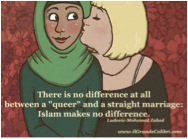
The setting up of a Muslim LGTBQ retreat in the U.S, or an image of a womn in hijab being kissed by non-hijabi women bring the LGTBQ question to both intimate and public spaces. They invite us to question where we stand and where our communities stand on this issue. Even when some Muslims react negatively to these images and any supporting opinions, at the very basic level they invite us to question Muslim marriages’ heteronormativity.
Sister Sarah told me yesterday after the parade that images like this “show [her] the love.” They show that even in our little conservative community in Alberta, there are Muslims that are ready to discuss homosexuality as other than a disease or a sin. And even if one does not agree with women in hijabs holding signs that support LGBTQ rights, it sends a strong signal for community building among LGTBQ Muslims and their allies.

